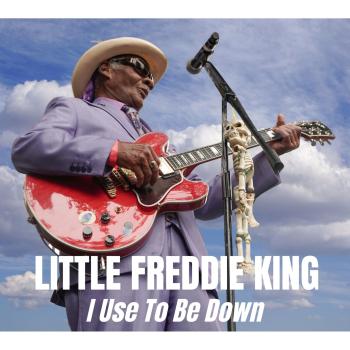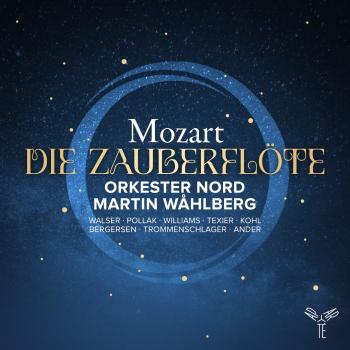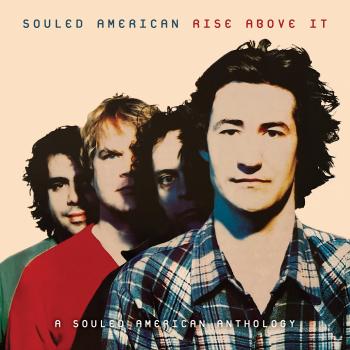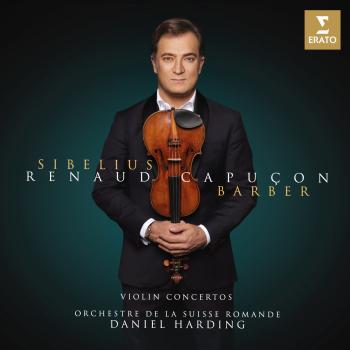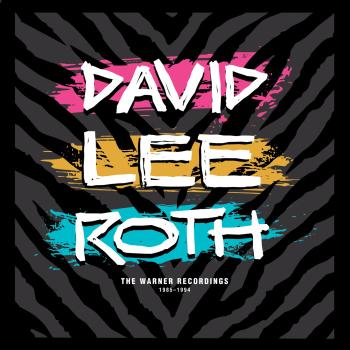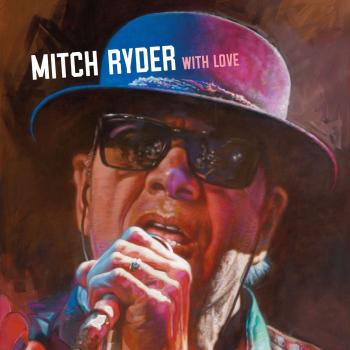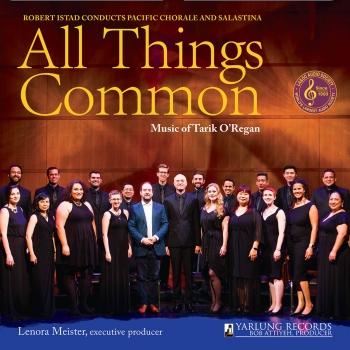Pacific Chorale & Robert Istad
Biography Pacific Chorale & Robert Istad
Pacific Chorale
In September 1968, conductor Maurice Allard announced choir auditions as part of community outreach at University of California’s fledgling campus in Irvine. Uncertain what the response would be from the young and largely arts-free Orange County community, Maurice waited with fingers crossed. Jan Unvert Landstrom, the choir coordinator, recalls Allard saying, “If 35 show up for auditions, I’ll take all 35. ”
On September 22, 116 singers lined up to audition. Pacific Chorale was born.
We had our first rehearsal the following week and gave our standing-room-only debut performance (Mendelssohn’s Elijah) as the Irvine Community Chorus in January 1969. The community’s enthusiastic response indicated strong demand in Orange County for musical offerings, and led the Irvine Community Chorus to spin off from the university the following season and incorporate independently as the Irvine Master Chorale. Though the repertoire could sometimes be daunting–in our second concert we tackled Stravinsky’s Symphony of Psalms–the singers not only rose to the challenge but embraced it.
When Maurice left the Chorale in 1972 to pursue other interests, the board of directors hired John Alexander, a dynamic 27-year-old conductor from Louisiana then teaching at California State University’s Northridge campus, as our new artistic director. Shortly after he stepped into the role, John announced ambitious plans to take the Chorale on tour in Europe. This began a long-standing tradition that over the years would take us to China, to South America, to Europe many times, to the U. S. S. R. and, memorably, Estonia on the eve of its emancipation. We traveled to New Orleans for the American Choral Directors Association National Convention, and toured the western United States for The Lord of the Rings in Concert. (Our singers proudly added “Elvish” to their linguistic resumes. ) More recently, the Chorale traveled to New York City to make our Carnegie Hall debut with Pacific Symphony.
We will never forget the historic venues and artistic experiences on these trips. But what veterans of these tours recall most is the way they led to our bonding not just as an ensemble, but as a family. We reminisce about hotel-room parties, bus mishaps, practical jokes, culinary (mis)adventures, lost luggage, hysterical “no-talent” talent shows, and lifelong friendships we made on these trips.
Orange County grew, and so did our Chorale. Recognizing that our audience and singers encompassed far more than the city of Irvine, and reflecting our community’s broader, more expansive outlook, we changed our name to Pacific Chorale. The Orange County Performing Arts Center (now Segerstrom Center for the Arts) opened in 1986, with the Chorale as one of its resident companies. We became more and more professional, with added administrative staff members and with a new core of paid singers. We joined Chorus America, the North American service organization providing resources, networking, and advocacy for the burgeoning choral field.
Our artistic partnerships and experiences proliferated. Pacific Symphony was founded in 1978, and so began another enduring artistic relationship. Pacific Chorale began to undertake engagements with the Los Angeles Philharmonic, Hollywood Bowl, and Ojai Music Festival. We performed under dozens of the world’s leading conductors, including Pierre Boulez, Seiji Ozawa, Zubin Mehta, Michael Tilson Thomas, Gerard Schwarz, Marin Alsop, Esa-Pekka Salonen, Bobby McFerrin, Christopher Hogwood, Roger Wagner, John Williams, and Gustavo Dudamel.
Our programming broadened beyond the traditional masterworks to include a focus on new and American works. This led to the Chorale’s first commissions and composer residencies, and to many West Coast and world premieres. Many of these works made their way into recordings, both self-produced and under Pacific Symphony’s auspices, driven by the recognition that new music depends on recording to find performers and audiences.
Amid all this change and growth, one thing remained constant: Pacific Chorale’s singers and Pacific Chorale’s conductor share a special bond. Our choral family had become an occupation, a hobby, a lifestyle, and a social hub. As the number of concert engagements and rehearsals climbed, a tongue-in-cheek license plate frame began to appear on certain cars within Orange County and beyond: “I can’t… I have Pacific Chorale. ”
Under the leadership of Board Chair Mary Lyons and Artistic Director John Alexander–both veteran educators–nurturing the choral singers, composers, conductors, and audiences of the future became one of our principal focuses in the 1980s and ‘90s. An ambitious slate of programs sprang up to complement Pacific Chorale’s concert offerings, from children’s and youth choirs, to competitions and workshops for composers, to community choral showcases, touching thousands of lives beyond the concert hall and earning national recognition. Today, young people who sang and studied under the Chorale’s auspices can be found working in churches, concert halls, conductors’ podiums, and universities around the country, from the Episcopal Diocese of Los Angeles to the Broadway stage.
After 45 years at the podium, John Alexander stepped down as artistic director in 2017, to the shedding of many tears. For the following season, Pacific Chorale’s 50th, John’s protégé Robert Istad took the helm. Rob was no newcomer. His 17-year history with the Chorale as a staff member, singer, and assistant conductor meant he already knew and loved the Chorale fiercely. And we love him back.
Pacific Chorale is an artistic ensemble, vehemently dedicated to that artistry. It is also a network, a community, and a family. Lifelong friendships have been forged. Couples have met, fallen in love, and married while singing together. Children have been raised in our chorale’s embrace. We come together from all backgrounds, ages, livelihoods, and belief systems to share in the power and beauty of music and the fellowship of kindred spirits. And as our opening track on this recording relates, courtesy of Saint Luke by way of Tarik O’Regan, in those moments we share “all things common." (Ryan McSweeney)
Robert Istad
I have always been in love with music. As a toddler, my favorite toy was my Fisher-Price record player. My parents were not wealthy, but were determined to give their children exposure to as much cultural richness as possible: music, theater, visual art, travel. So after I begged for piano lessons at age 5, my Mom took a side job to purchase a used spinet piano and pay for lessons. She laughingly relates that she was the only parent in the neighborhood that had to beg her child to stop practicing.
Perhaps it was in my genes. My grandfather, Lloyd Istad, became a professional-level violinist with the support of my great-grandparents, even though as Depression-era Norwegian immigrants they were living in poverty. It must have been heart-breaking when he had to decline an opportunity to play with the Chicago Symphony to serve as a Marine during World War II. He took his violin with him during his deployment to the South Pacific, where he held informal concerts with his fellow Marines in the evenings.
Music was everywhere in my grandparents’ home. They played records of Brahms symphonies, Mendelssohn violin concertos, and Verdi operas. Rarely did my grandfather play his violin for anyone, as his fingers had become damaged and cumbersome after years of manual labor in his roofing business. Still, every Christmas Eve he would don his red plaid holiday pants, open the old leather violin case, and play Christmas carols with me at the piano. The entire family would sing. I’m sure we sounded a veritable mess, but to me it was my favorite concert of the year. He lived on as my musical champion, helping fund my move to more rigorous teachers, and supporting my decision to study music professionally in college. I still feel his presence with me when I conduct, and I live in gratitude when I think of the sacrifices he made that allowed me to thrive.
I attended Augustana College in Rock Island, Illinois, where I could major in pre-med while maintaining my piano studies. Dr. Robert Satterlee recruited me as his piano student. As part of my piano scholarship, I was required to perform in a major ensemble. Having also studied percussion, I expected to be playing in the orchestra or wind ensemble. Instead, I was required to audition for the choir. I had sung musical theater and other contemporary music, but had very little choral experience. After some grumbling, I auditioned, and was surprised to win a spot in the Augustana Choir, the top-level ensemble. My conductor informed me that my musicianship was good, and that he thought my voice… would improve with time.
Walking into that first rehearsal with trepidation, I felt completely out of place. My section leader handed me a large folder of music and we started to sing. The first piece we rehearsed was Herbert Howells’ Requiem. The sound overwhelmed me. It was resonant in a way I had never experienced: so perfectly in tune, so rich. As a pianist, I’d lived my life in equal temperament, and had never experienced just intonation. My mouth closed and I could only listen. I could feel my entire body vibrating. In an instant, I was transformed. Creating this kind of experience with others would become my life’s mission.
When it came time to choose where I would go to graduate school, I selected California State University, Fullerton, where I would study with John Alexander, the renowned conductor of Pacific Chorale. As his graduate assistant, I was also given the opportunity to serve as the Chorale’s director of operations.
The first concert I planned as Pacific Chorale’s director of operations was a production of Mahler’s Eighth Symphony. Charged with coordinating rehearsals and staging for singers from four separate choirs, I spent hours preparing diagrams, stage instructions, and the details of an artistic vision I could barely comprehend. Luckily, people were (for the most part) patient and loving. I learned valuable lessons, including how to make important decisions quickly. I don’t believe I’d ever felt such an intense sense of pride in my life as when that performance began.
The first time I heard Pacific Chorale, I was astonished. That sound resonated with me for days. I know I am not the only person who has felt this way after hearing the Chorale’s power and artistry for the first time. Our musicians, board members, staff and audience members have made its perseverance our mission. I fell in love with Pacific Chorale, held on for dear life, and have yet to let go.
After I completed my doctorate under William Dehning at the University of Southern California, the ties I had forged with Pacific Chorale called me back to Orange County. I found myself blessed and fortunate to become Director of Choral Studies at Cal State Fullerton, a job that brings me daily joy as I encourage and mold the phenomenal young talented people coming through our program. It was a tremendous affirmation to be recognized as Outstanding Professor of the Year in 2016.
John Alexander also asked me to serve as Pacific Chorale’s assistant conductor. One of my privileges in that role was leading the Chorale in rehearsals for many of our guest engagements with Pacific Symphony, conducted by the remarkable Carl St. Clair. Preparing a choir for Carl is an enlightening adventure; Carl has been an immense positive influence on my artistic life. I cherish every moment we work together.
In 2015, John gave me the opportunity to share the podium with him on a concert with Pacific Chorale and Pacific Symphony. I was to conduct Howells’ Hymnus Paradisi–the orchestrated version of the very piece that inspired my life in choral music. Although I had written my dissertation on it years earlier, I really understood the piece only after the gift of conducting it. I will never forget the moment I walked on stage and the musicians gave themselves over to the grandeur of Howells’ score.
That same year, Pacific Chorale’s Board of Directors announced that after 45 years at the podium, John would be retiring as Artistic Director in 2017. They gave me the greatest honor I could possibly imagine by asking me to be his successor. My first season as Artistic Director–the Chorale’s fiftieth anniversary season–opened on October 29, 2017. I had the privilege that night of introducing music by Tarik O’Regan to our Pacific Chorale family. The artistic journey these last few years with Tarik as our composer in residence has been rich and exciting, leading directly to this recording, the fulfillment of a dream. I hope that it brings you even a portion of the joy that this music and this ensemble have given me. (Robert Istad)

